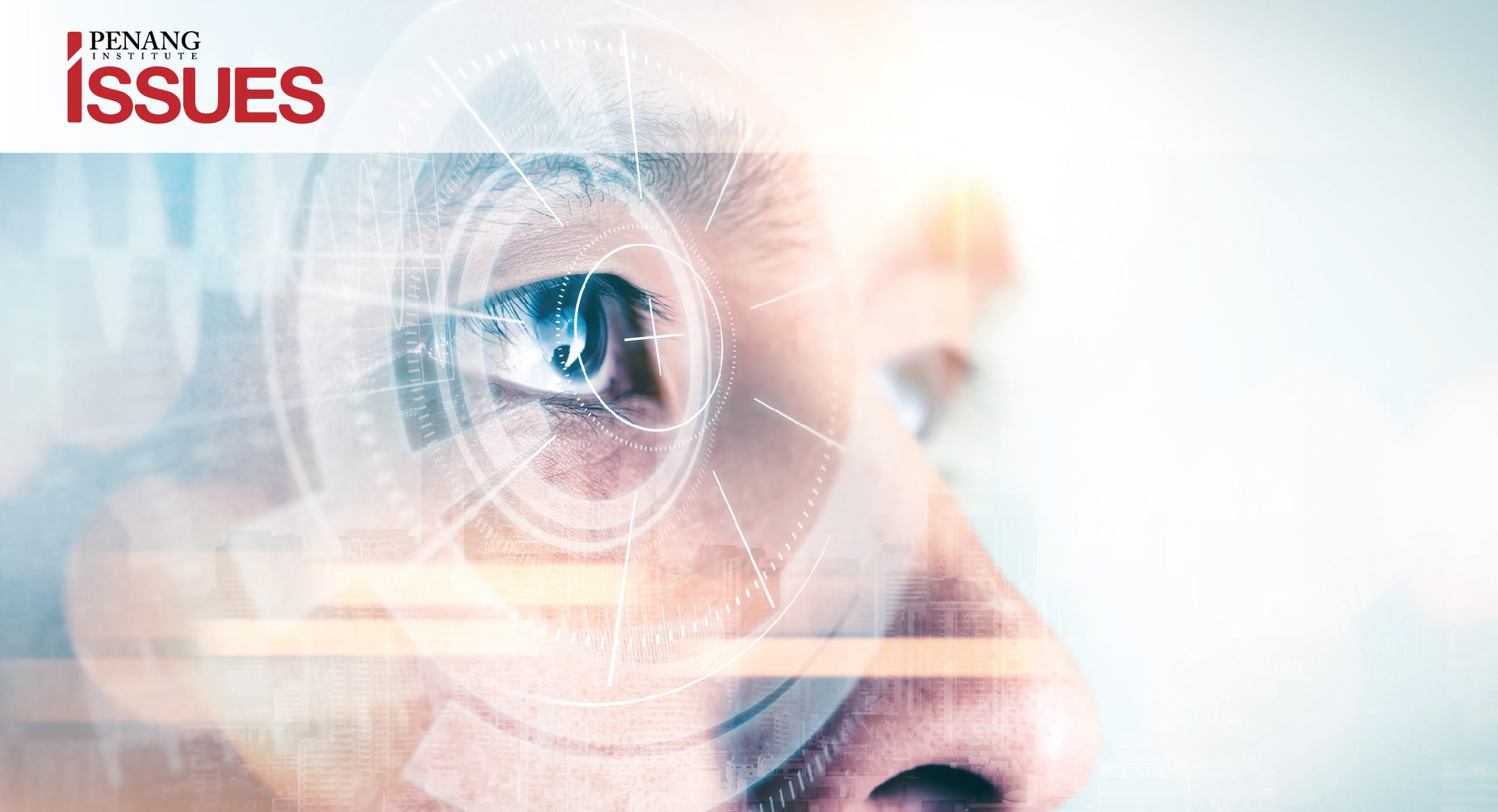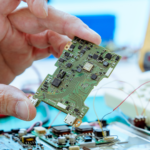EXECUTIVE SUMMARY
- Domestic air travel and international travel bubbles are now picking up as vaccination rollouts accelerate in Malaysia and the rest of the world.
- The need for a seamless and contactless check-in process in Malaysian airports such as Penang International Airport is now more vital than ever to reduce contact, crowding and ultimately, virus infections.
- Taking inspiration from Star Alliance and Narita International Airport’s handling of air travel passengers during the Tokyo Olympics, this paper recommends that Penang International Airport similarly implements a biometric facial recognition system to ease the travelling process and to protect both travellers and airport staff.
- Policymakers need to collaborate with international and domestic stakeholders in the travel industry such as airlines or airline alliances, technology providers and governmental authorities in order to achieve a harmonised standard across international airports.
- While the decision to implement facial recognition technologies in the Penang International Airport lies under the authority of Malaysia Airports Holdings Berhad (MAHB), the Penang State Government is encouraged to push for the technology to be installed sooner, rather than later. The State also needs to move forward with this technology in other key service sectors as well, such as in hotels, car rentals, and retail.
Introduction
The commencement of Langkawi’s domestic travel bubble on 16 September 2021 saw a strong reception, with Malaysia Airlines and budget carrier AirAsia both reporting maximum capacity on the first day. The Federal Government has hinted that other local tourism destinations will reopen if Langkawi’s travel bubble proves successful (Yusof, 2021). At the same time, the Penang State Government has submitted a proposal to the National Security Council to test-run a reopening of spacious outdoor tourist attractions in the state (The Star Online, 2021). All these indicate that Penang may reopen for tourism very soon.
For the past 18 months, the aviation industry has been facing a crisis of historic proportions due to the pandemic, and is still trying to navigate itself out of the crisis. CEO of Star Alliance, Mr. Jeffrey Goh was encouraged by some heavy domestic concentrations of traffic in the United States and China where numbers are going back to pre-crisis levels (NEC, 2021). Meanwhile, Singapore has announced special lanes for travellers from Germany and Brunei from September 8 under their Vaccinated Travel Lane (Ang, 2021). In Thailand, authorities are keen to reopen Hua Hin, Chiang Mai and Bangkok in October, following the limited success of their pilot programme called the Sandbox scheme, during which Phuket was reopened to international tourists in July, and which generated THB1.6 billion in revenue (Tan, 2021).
As travel rules are eased, demand for air travel returns, especially in the leisure segment. It is therefore imperative that as safe, secure and seamless an experience as possible is made available to travellers. To achieve this, adoption of cutting-edge biometric technology is key.
Health protocols to undergo Covid-19 screening prior to departure either at the airport or before arriving at the airport, and verification of travellers’ travel eligibility based on their test certificates and vaccination certificates are crucial, but these would also inevitably create long queues if done manually.
AirAsia’s Digital Travel Health Pass system, which is a collaboration between AirAsia, MySejahtera, and MIMOS (Malaysian Institute of Microelectronic Systems), is leading by example. Their Digital Travel Health Pass system aims to reduce the number of guests visiting counters and encourages them to check-in online, since it is now possible to virtually process passengers’ vaccination certificates and test results.
Taking things further with facial recognition technology
The Star Alliance, which is the world’s largest global aviation grouping, launched the Star Alliance Biometric solution in November 2020 at Frankfurt and Munich airports, aimed at creating a seamless airport procedure. Through the use of digital ID, things are kept simple, touchless and secure. Biometric technologies enhance security, convenience and hygiene by enabling multiple checkpoints in airports. Passengers only need to enrol once to use the service with any participating airline and airport and can then pass through security access and boarding gates in a touchless manner. They also do not need to remove their masks for identity checks (Star Alliance, 2021).
Even before Covid-19, Narita International Airport had carried out the Fast Travel programme, which is an initiative of the International Air Transport Association (IATA) to expand self-service options and improve passenger processing time at the airport. At other major airports, systems are being adopted which utilise only one ID or a single token for passenger processing. Another airport that already adopted this technology in 2017 is Singapore’s Changi Airport where their latest terminal, Terminal 4, is designed to be fully automated, with minimal need for manual processing of passengers. With the pandemic, this self-service and biometric technology has been useful for preventing infections between passengers and staff.
On 19 July 2021, just before the starting of the Tokyo Olympics, Narita Airport deployed a biometric system called ‘Face Express’ to make boarding seamless for passengers flying with Japan Airlines and All Nippon Airways. This system uses face recognition to allow passengers who have registered a photo of their face at check-in to go through multiple touch points, including baggage drop, immigration clearance, and boarding gates. This renders the need to show boarding passes and passports unnecessary. The system is appropriately called ‘Face Express’. Mr. Hideharu Miyamoto, Executive Director of Narita International Airport Corporation opines that this technology is crucial once international travel restarts (NEC, 2021).
Star Alliance and Narita International Airport did not let the prolonged crisis go to waste, and instead innovated to manage the new conditions of air travel. A contactless and touchless airport protocol is necessary in the future, and a system with multiple health passes will be difficult and confusing for passengers, especially when they travel to different countries. Travellers cannot be expected to download different health passes into their smart devices at every stage of their trip. Fortunately, new technologies exist which allow for international streamlining of credentials such as vaccination and test certifications.
AirAsia’s facial recognition system, FACES (Fast Airport Clearance Experience System) has been around since 2018. It was launched in Senai International Airport for passengers flying to and from Macau and Bangkok. In fact, Senai was the airport to pilot the project (Lim, 2018). In the latest development, AirAsia partnered with Vision-Box to advance its digital transformation, particularly in emphasising contactless screening technology for air travel during the pandemic (Weiss, 2020).
This year, MAHB awarded its Single Token project for Kuala Lumpur International Airport (KLIA) to Vision-Box1 to implement a facial recognition system at KLIA and KLIA2 terminals (Biometrics, 2021).
Collaborations between stakeholders in aviation, governments, and in the technology and service industries will be crucial to successful implementation of the needed technology domestically, and to harmonise with other airports around the world. While Kuala Lumpur International Airport has already taken steps to utilise facial recognition technology this year, MAHB has yet to introduce the technology to Penang International Airport. As an international travel destination, the implementation of this technology at Penang International Airport needs to be done quickly, since implementation will in any case require months of pilot tests to ensure that the system works, and airport staff will have to be well trained in handling any glitches that might arise.
Table 1: Comparison of biometric identifier technology at international airports

i. Non-exhaustive list
ii. Changi Airport and Narita Airport are selected for comparison due to their success in already implementing facial recognition technologies for international travellers.
iii. Schiphol Airport is chosen for comparison due to its partnership with Vision-Box, to whom KLIA has also awarded its biometric facial recognition technology project. Both KLIA and Schiphol Airport have yet to fully launch this technology.
iv. SITA or Société Internationale de Télécommunications Aéronautiques is a multinational information technology company providing IT and telecommunication services to the air transport industry.
v. IDEMIA is a multinational technology company which provides identity-related security services, and sells facial recognition and other biometric identification products and software.
vi. NEC is a Japanese multinational information technology and electronics corporation.
Source: Author’s own compilation.
Furthermore, having biometric facial recognition technology at Penang International Airport could drive a spillover effect to other industries in the state. As the nation moves towards accepting Covid-19 as an endemic, more touchless technology is needed to control the spread of the virus. Service sectors such as retail, banking, F&B and hospitality will also need to adopt the technology. Hence, the sooner the technology is utilised at the airport, the sooner society at large can become familiar with it.
Concerns over Data Privacy
The main concerns over the adoption of facial recognition and other artificial intelligence (AI) technologies are privacy intrusion and data violation. Hence, laws to regulate this information will be sorely needed. To gain public confidence in the use of such technologies, transparency in data collection, storage, and handling has to be maximised.
For example, Narita Airport’s privacy policy makes it clear to passengers that personal information obtained is only used for boarding purposes. Facial images and other information gathered in their Face Express system is automatically deleted within 24 hours. Additionally, the technology is only used if consent is acquired (Narita Airport, 2021). Users thus also have the option not to use this technology.
Additionally, the power of control in using biometric technology must lie in the hands of users. They should have the liberty to switch the data collected about them on and off, and delete data when they feel that they are no longer needed.
Policy Recommendations
1. Expedite introduction of biometric facial recognition technology to Penang International Airport
The State Government needs to work with MAHB towards equipping Penang International Airport with biometric facial recognition technology as soon as possible; this is important because full integration will take some time in any case. With the impending reopening of the state to tourism, it is vital that Penang International Airport has by then already tested and approved the system to attain a secure, convenient and hygienic airport experience for visitors.
2. Collaborate with stakeholders such as airlines, airline alliances, governmental authorities, and technology providers
The State Government needs to collaborate with all stakeholders to realise the goal of having such technology integrated within the state. For use of the technology at the airport, there must be collaboration between the State, MAHB, airlines, airline alliances, Federal Government authorities and technology providers to streamline passenger processes. It would be helpful if vaccination and Covid-19 test certifications can be verified using the same system in the airport, especially if the technology is able to recognise faces even with masks on.
3. Push for 5G connectivity in order to use facial recognition biometrics at the airport
The use of facial recognition biometrics in the airport would make it convenient for travellers to pass through travel protocols securely and without the fuss of having to pull out their passports or boarding passes numerous times. In order to achieve this, the network infrastructure in the airport needs to be able to handle heavy data processing. It is recommended that the State, through Digital Penang, work with the Malaysian Communications and Multimedia Commission (MCMC) to push for 5G connectivity soon.
4. Transparency and education to consumers
Consumers will inevitably be concerned about how privacy information are handled. Once face recognition technologies are introduced, the State must be transparent and clear about how data is collected, handled, stored, and deleted. Ideally, education about such technologies need to be clear, simple and accessible. Users also need to know that they are not being tracked unnecessarily or for dubious purposes.
You might also like:
![George Town Heritage Celebrations: Achievements and Reflections]()
George Town Heritage Celebrations: Achievements and Reflections
![An Inquisition into Malaysia’s PADU Subsidy Targeting, and Beyond]()
An Inquisition into Malaysia’s PADU Subsidy Targeting, and Beyond
![US-China Trade Relations: Implications for Penang's E&E Industry]()
US-China Trade Relations: Implications for Penang's E&E Industry
![Breaking Old Habits is Vital for Malaysia’s Mainstream Newspapers]()
Breaking Old Habits is Vital for Malaysia’s Mainstream Newspapers
![Picking the Brains of GLC Heads: Policy Priorities for Penang in the Coming Decade]()
Picking the Brains of GLC Heads: Policy Priorities for Penang in the Coming Decade







